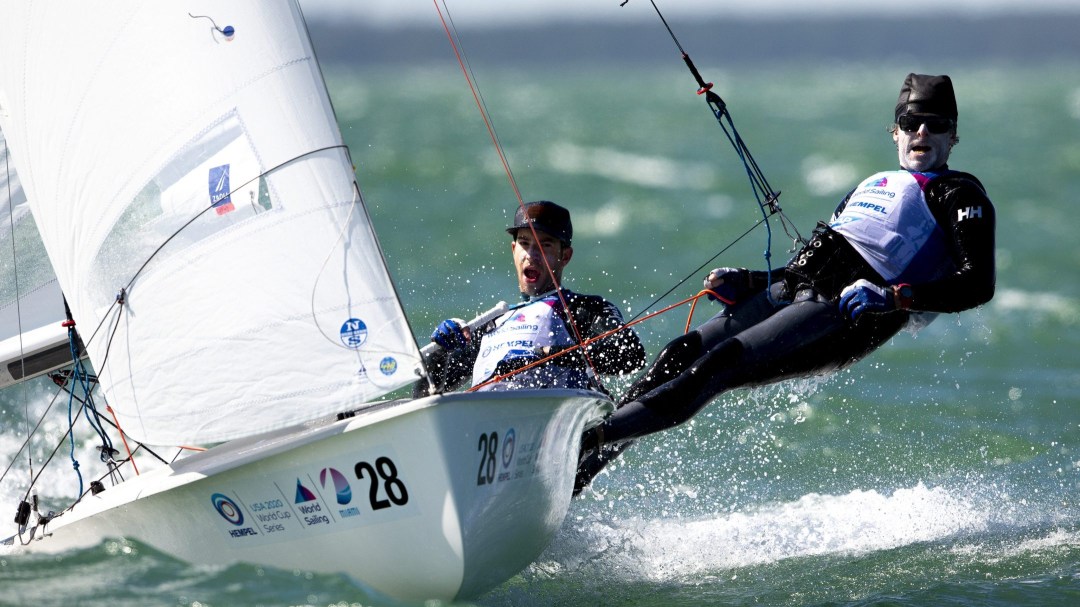What you need to know about Olympic sailing
Interested in learning more about Olympic sailing, but don’t know where to start as a landlubber? (Yes, that’s an old-fashioned term for someone unfamiliar with sailing and the sea). This article covers the basics of what you need to know about Olympic sailing.
Sailing was first contested at the 1900 Olympic Games, after bad weather cancelled the races for what would have been its Olympic debut in 1896. The sport has appeared in every Olympics since, with the exception of 1904.
While women had competed alongside men in mixed boats since 1900, in 1988 a category for women only was introduced. Until 2000, the sport was not known as sailing, but rather “yachting.” In total, Canada has won nine Olympic medals in sailing.
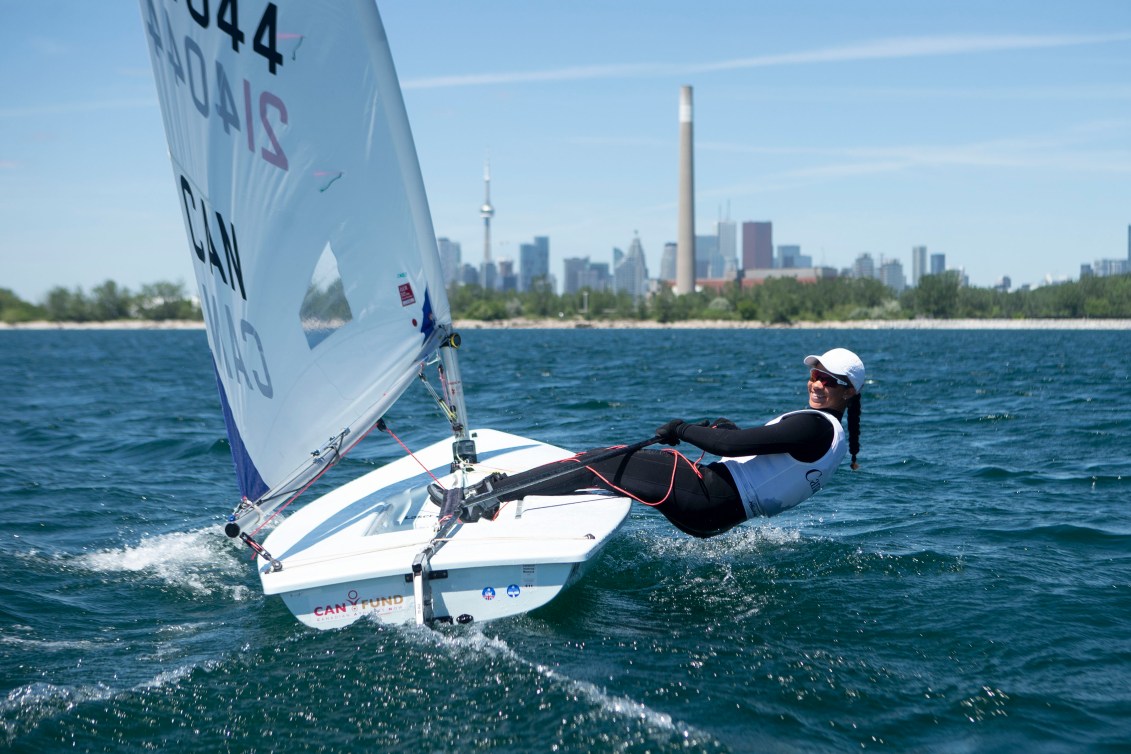
In sailing, competition is divided into different “classes,” which refers to the type of boat being sailed. The classes of boats used in the Olympic Games have changed over the years as boat design and technology has advanced. In any given race, only boats of the same class will compete against each other.
The Olympic Games uses a “one-design” class system, which means that all competitors in a class use the exact same model of boat, with no differences in design between countries. Boats are inspected prior to competition to ensure a level playing field.
Competition is also divided into men’s, women’s and mixed categories.
Here are some key things to know to put some wind in the sails of your Olympic sailing knowledge.
How is Olympic sailing scored?
Classes will sail numerous races (up to three per day, depending on the weather conditions) during an Olympic regatta. Points are awarded based on how well a boat finishes in a given race. First place receives one point, second receives two points, and so on. These points are all added together. The lower the total score, the better the overall placement for the boat. After what’s called the “opening series” of races, the top 10 boats compete in a medal race in which the points for placement are doubled. After the medal race, the boat with the lowest total score (including the opening series) is the winner.
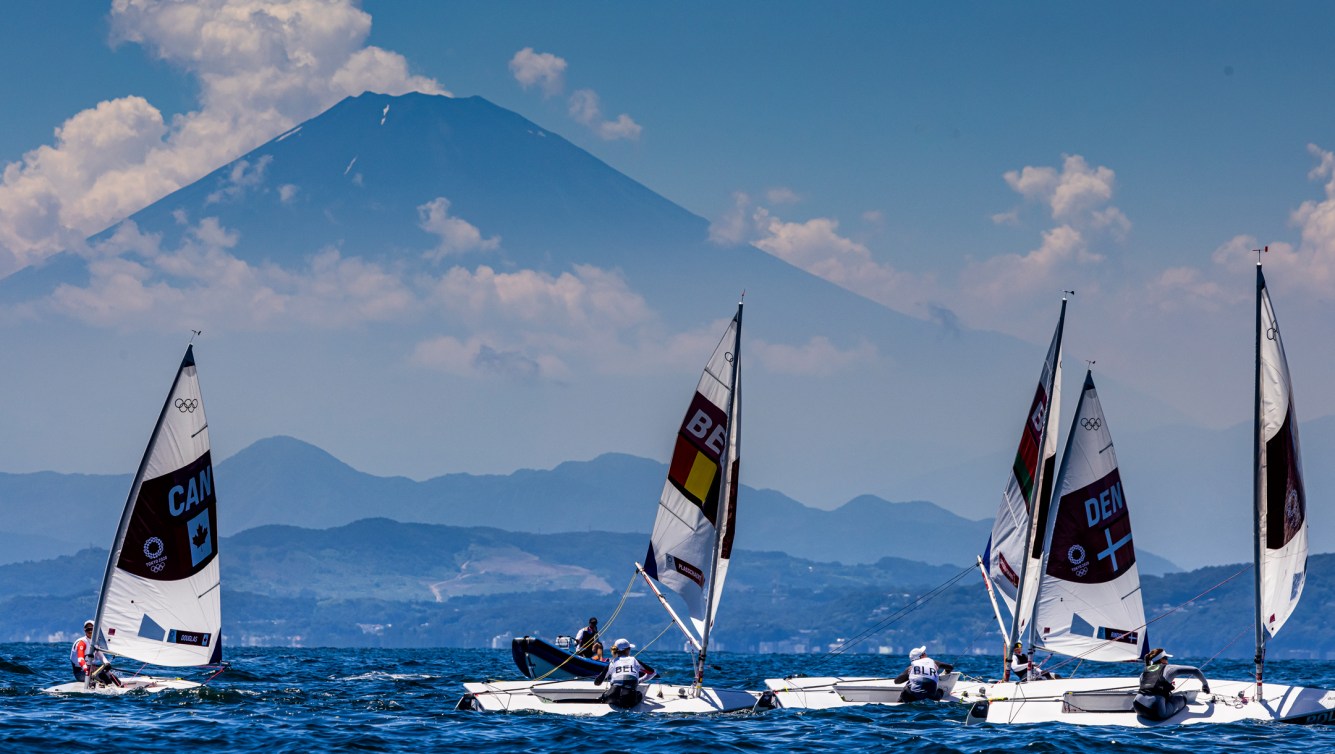
What are the types of boats used in Olympic sailing?
“Dinghy” is a broad term historically used to refer to any type of sailboat or rowboat. Today, there are several categories of dinghies sailed at the Olympics with different sizes, speeds, and number of sailors to man them.
Sailors distinguish between “skiffs” and “high-performance dinghies.” Skiffs are the quickest kind of dinghy, characterized by flat and narrow hulls (the part of the boat that sits on the water) and large, asymmetrical foresails (called spinnakers). While high-performance dinghies are also built for speed and racing, they tend to have more rounded hulls and symmetrical foresails.
A multihull, as the name indicates, is a boat with more than one hull, for example, a catamaran (which has two hulls).
There are also board-based sailing events at the Olympics. Windsurfing, a combination of surfing and sailing, became an Olympic event in 1984. Kiteboarding has been added to the Olympic sailing program for 2024. The discipline involves an athlete using a hand-controlled kit to maneuver across the water on a board similar to a wakeboard.
Dinghies at the Olympics:
- ILCA 7:
- The ILCA 7 is the Standard Laser rig and has been used as the Olympic men’s single-handed dinghy since 1996. The original Laser design was pioneered by Canadians Bruce Kirby and Ian Bruce in 1969.
- ILCA 6:
- The ILCA is the Laser Radial rig, used as the Olympic women’s single-handed dinghy since 2008. The ILCA 6 features the same fibreglass hull as the ILCA 7, but with a slightly shorter and more flexible mast and 18% less sail area.
- 470
- The 470 gets its name from its hull length, coming in at 470cm or 4.7m. These boats are rigged with a mainsail, jib, and spinnaker. Unlike the ILCA 6 and 7, the 470 is sailed with trapeze at the Olympic level. The 470 has been an Olympic class since Montreal 1976, when it was an open class. In 1988, it was divided into men’s and women’s classes. At Paris 2024, it will be contested only as a mixed event.
Skiffs at the Olympics:
- 49er:
- The 49er’s name comes from the fact that the hull is 4.99m in length. It is rigged with three sails: a main sail, a jib, and an asymmetrical spinnaker. The 49er has been an Olympic class boat since 2000.
- 49erFX
- The 49erFX is a redesigned version of the 49er, made to better suit the weight of all-female crews. It was first selected as the women’s double-handed skiff for Rio 2016.
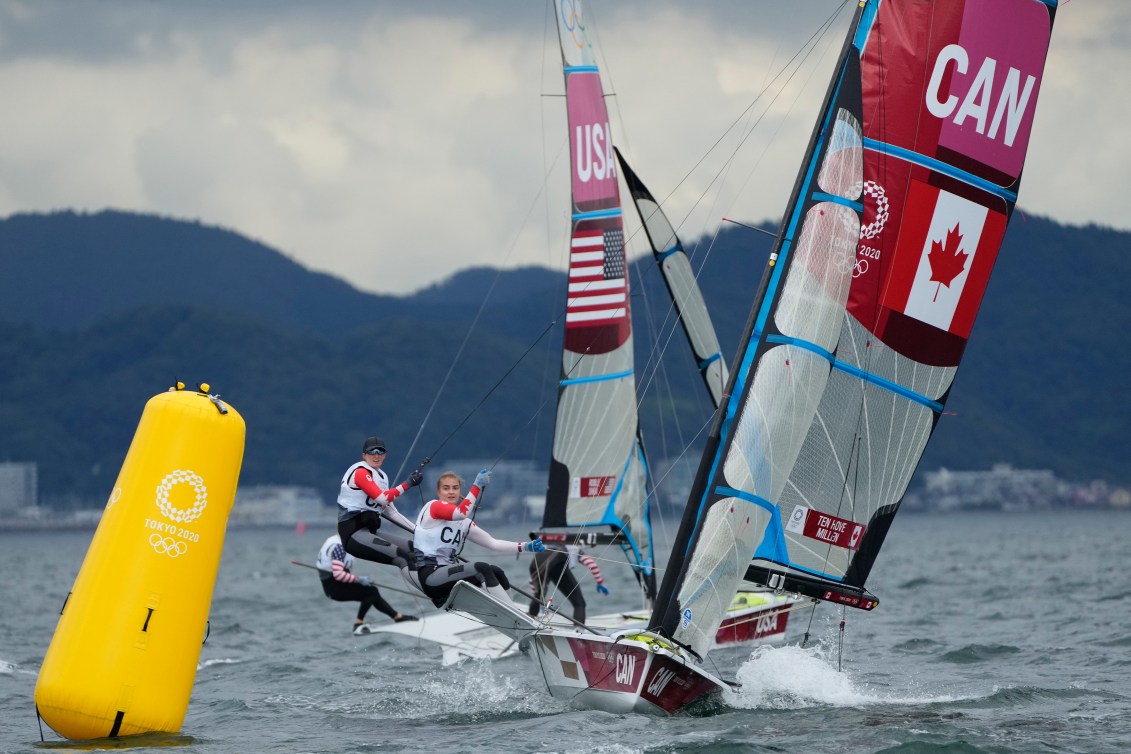
Multihulls at the Olympics:
- Nacra 17
- The Nacra 17 is a high-performance catamaran. The Nacra 17 gets its name from being 17 feet long. It was first added to the Olympic program at Rio 2016. At the Olympics, the Nacra 17 is sailed by a mixed gender crew.
Kiteboards at the Olympics:
- Formula Class Kite
- Both men and women will sail the Formula Kite at Paris 2024. The Formula Kite features a hydrofoil board and foil kite.
Windsurfers at the Olympics:
- iQFoil
- The iQFoil will replace the RS:X in the windsurfing class for Paris 2024 . The sail size is nine square metres for men and eight square metres for women.
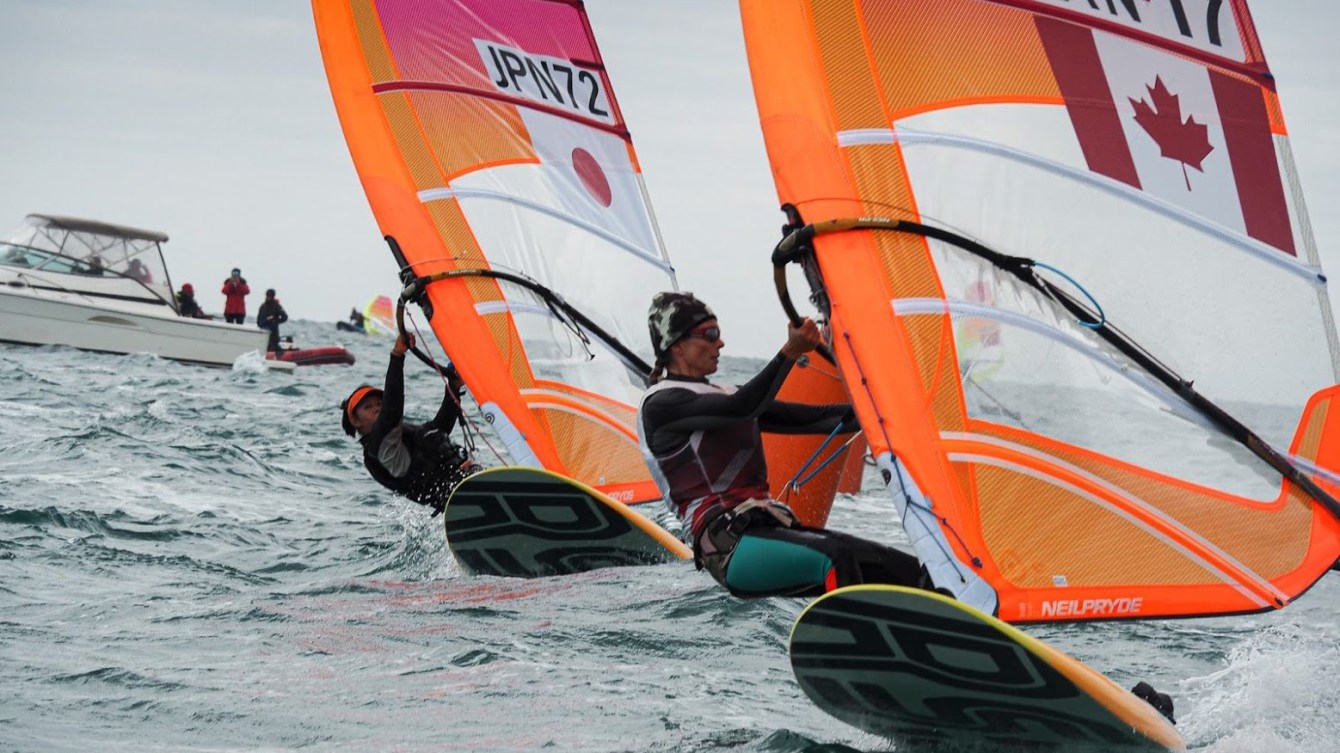
How do sailors qualify for the Olympic Games?
There are 330 quota spots for sailing at Paris 2024, spread across the 10 events. Each National Olympic Committee can qualify up to 14 quota spots, but only one boat per event.
READ: How Team Canada can qualify for Paris 2024 in sailing
The 2023 World Sailing Championships are a major opportunity to secure Olympic quota spots. The event is taking place in The Hague, Netherlands from August 11 to 20 and will award spots to 107 boats. For Canadian sailors, there are also opportunities to qualify boats at the ILCA World Championships in January 2024, the Santiago 2023 Pan American Games in October, and a Last Chance Regatta in April 2024.
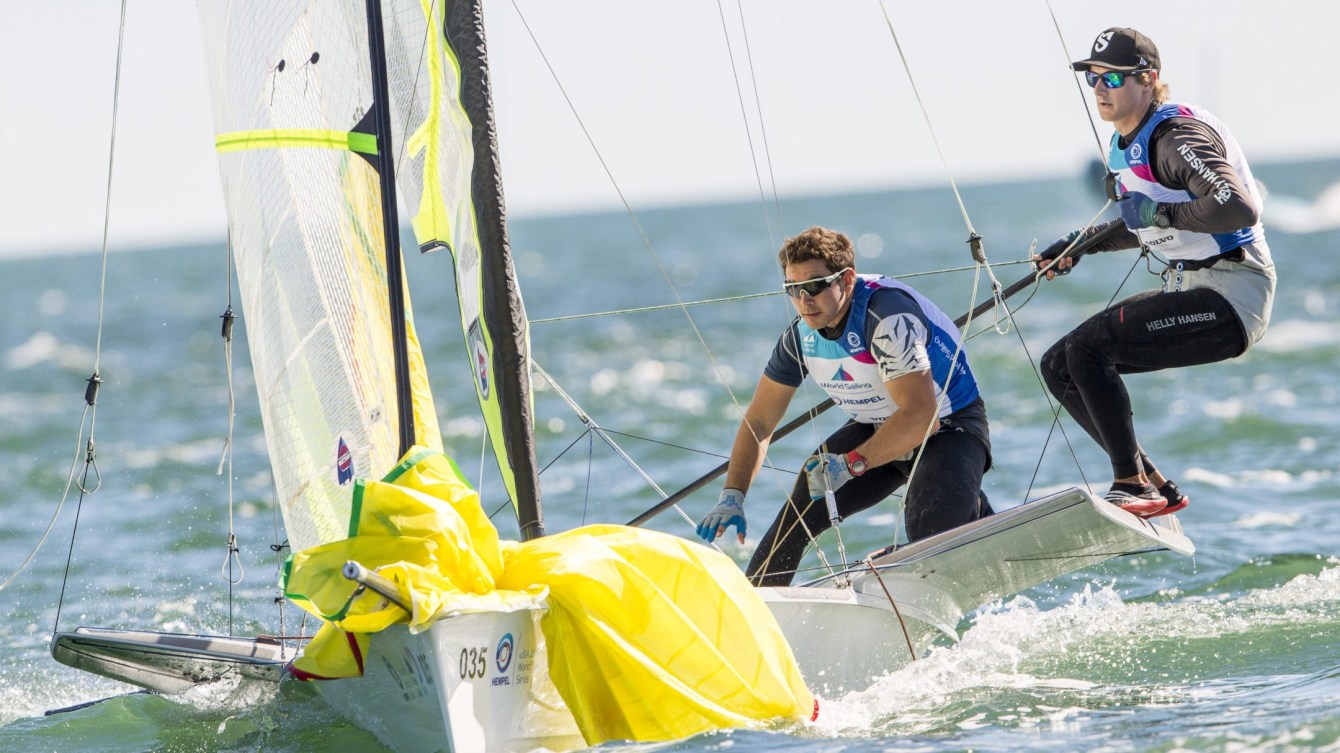
What is some key sailing terminology?
Sailing is one of those sports where it may seem like athletes and fans are speaking another language. If you want to follow a race, here are some basic terms to know:
“Stuck in irons”
This is a sailing term that means the bow of the boat is pointed directly into the wind and therefore the wind cannot help the boat move forward.
Tacking
Tacking is a sailing maneuver in which boats turn through the wind. This means that the direction from which the wind is blowing changes from one side of the boat to another. It is also sometimes referred to as “coming about.” When sailing upwind, boats must sail in a zig-zag pattern, tacking each time to change direction, in order to avoid getting “stuck in irons.”
Gybing/Jibing
Gybing or jibing is a sailing maneuver where a boat turns its stern (the back of the boat) through the wind, causing the boom (located at the bottom of the mainsail) to swing across from one side of the boat to the other. Jibing is a more difficult and dangerous maneuver than tacking. In racing a triangular course, a jibe is often the most effective way to round a buoy.
Hiking
In sailing, hiking doesn’t mean strapping on your backpack and lacing up your boots for a day on the trails. To sailors, hiking refers to leaning as far to the windward side of the boat as possible (windward means the direction that the wind is coming from) in order to keep the boat from capsizing (tipping over).
Trapeze
Don’t think circus trapeze – there’s no (intentional) flips in the air with this kind of trapeze. In sailing, the trapeze is a wire connected from up on the mast to a hook on a sailor’s harness, near waist-level. This system allows the crew to lean further out beyond the boat. Like hiking, the purpose of using trapeze is to help keep the boat from capsizing while allowing the sail to be pulled in tightly to maximize speed. Some boats have only one trapeze, so only the crew would use it, but in the case of the 49er, both the crew and the skipper use trapeze.
Heel
The heel of the boat refers to how far the boat is leaning to one side, in response to the force of the wind against the sails. Crew members hike or trapeze in order to control the heel of the boat and prevent it from capsizing.
Protest
In sailing, a protest is a claim by one boat that another has broken a rule. A protest can be resolved on the water by the guilty party doing a specified number of penalty turns, depending on the offence. If the accused party does not perform an on-water penalty, the claim is then decided upon in an off-water hearing in which all boats involved explain what they think happened during the incident.

